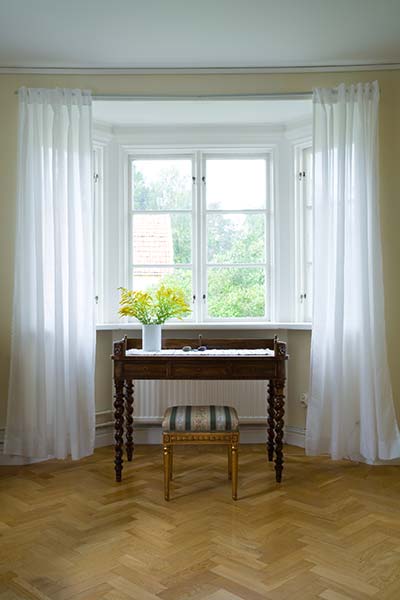Choosing Which Style is Right for Your Home.
The shape and style of the windows in your home can make a tremendous difference in how a room looks, feels, and functions. Choosing the right type of window is a decision that shouldn't be taken lightly, and can be easier and more enjoyable when you're armed with the right information.
Bay windows and bow windows can both add true architectural interest to a room, and open up a vista to your home's exterior that changes the entire feel of a room. They provide a wider view of the garden, yard, or street outside, and real estate professionals often site bay and bow windows as creating a pleasant "focal point" for your home. Understanding the differences between a Bay Window and a Bow Window could significantly influence which style is best for you, your home, and your lifestyle.
What Are the Similarities, and What Are the Differences?
Bay Windows and bow windows are terms that sometimes get used interchangeably. And while there are definitely elements that are similar between the two, there are significant differences that can inform which enhances the appearance and functionality of your home.
The most fundamental similarity between bay and bow windows is that both are designed to protrude from your home, designed with an arc that ranges in degree of curvature. Both create a wider, taller, and more unobstructed view to the beauty of the outdoors, and both can make a room feel larger, brighter, and more open.
Bay Windows
Bay windows project outward from the main walls of your home, forming a "bay" in a room. They are usually comprised of three windows of varying sizes, with a large center window flanked by two smaller windows (the two smaller windows are actually called "flankers"). The flankers are angled from the interior wall somewhere between 30 to 40 degrees, and are often double-hung to provide the appropriate amount of ventilation. The center window is both for both function and feel; it creates a larger, clear view to the outside, while helping further ventilate the room.
Bow windows
A bow window can be most easily described as a "curved bay window." Most bow windows are comprised of three to six windows, all of which are the same size. The result is a look that is more gradual in its curvature that the bay design, which typically has sharper angles. In addition to a different feel from the bay window, bow windows can also create more ventilation within the room, with installation options that include double-hung, single-hung, and casements
Whether your preference is bay windows or bow windows, both offer lasting value and interest to your home, and both provide clear views to the outside world that cannot be matched by a standard flat window.
Learn more about bay windows and bow windows, and how they can truly transform your home.

